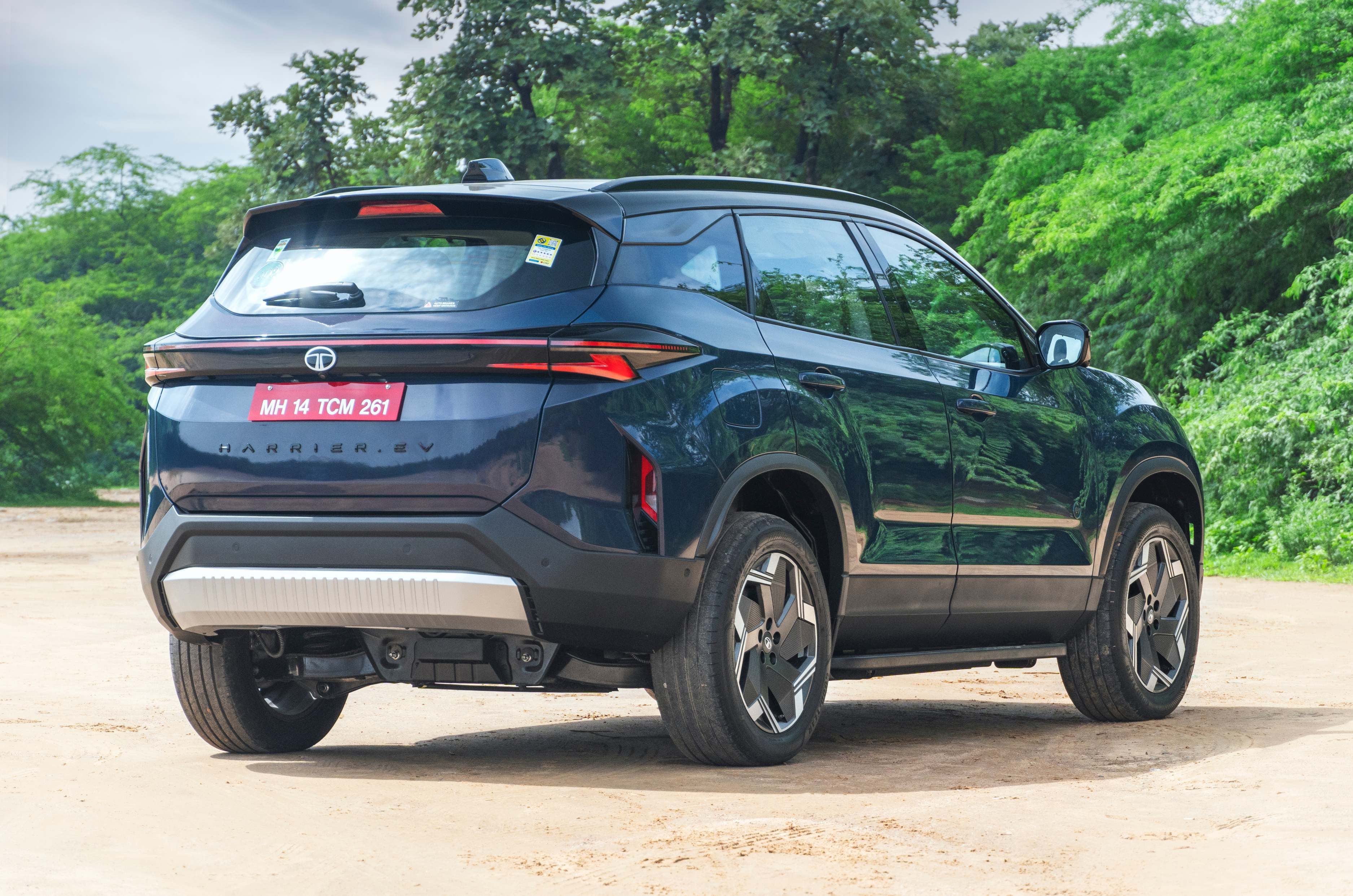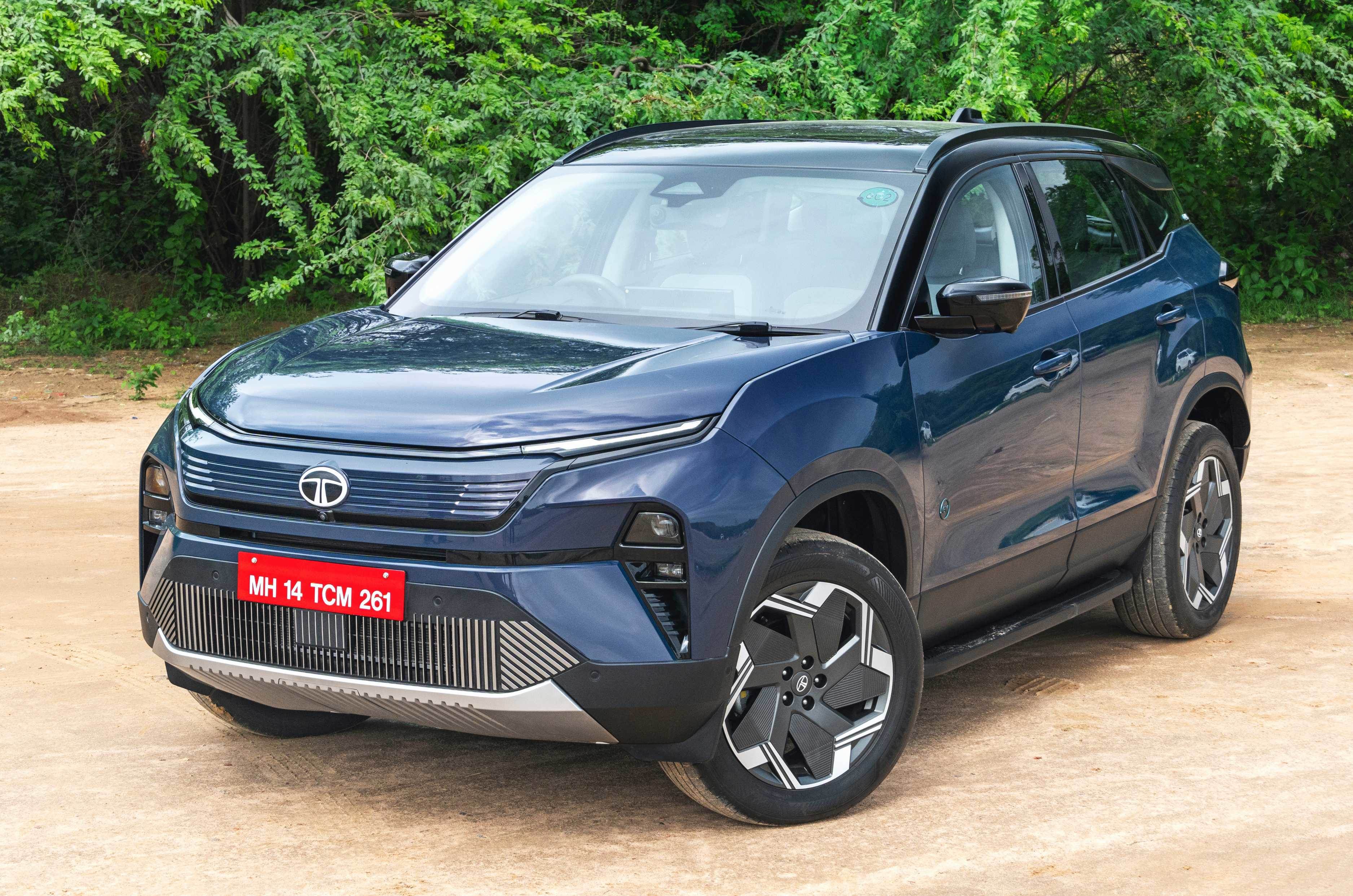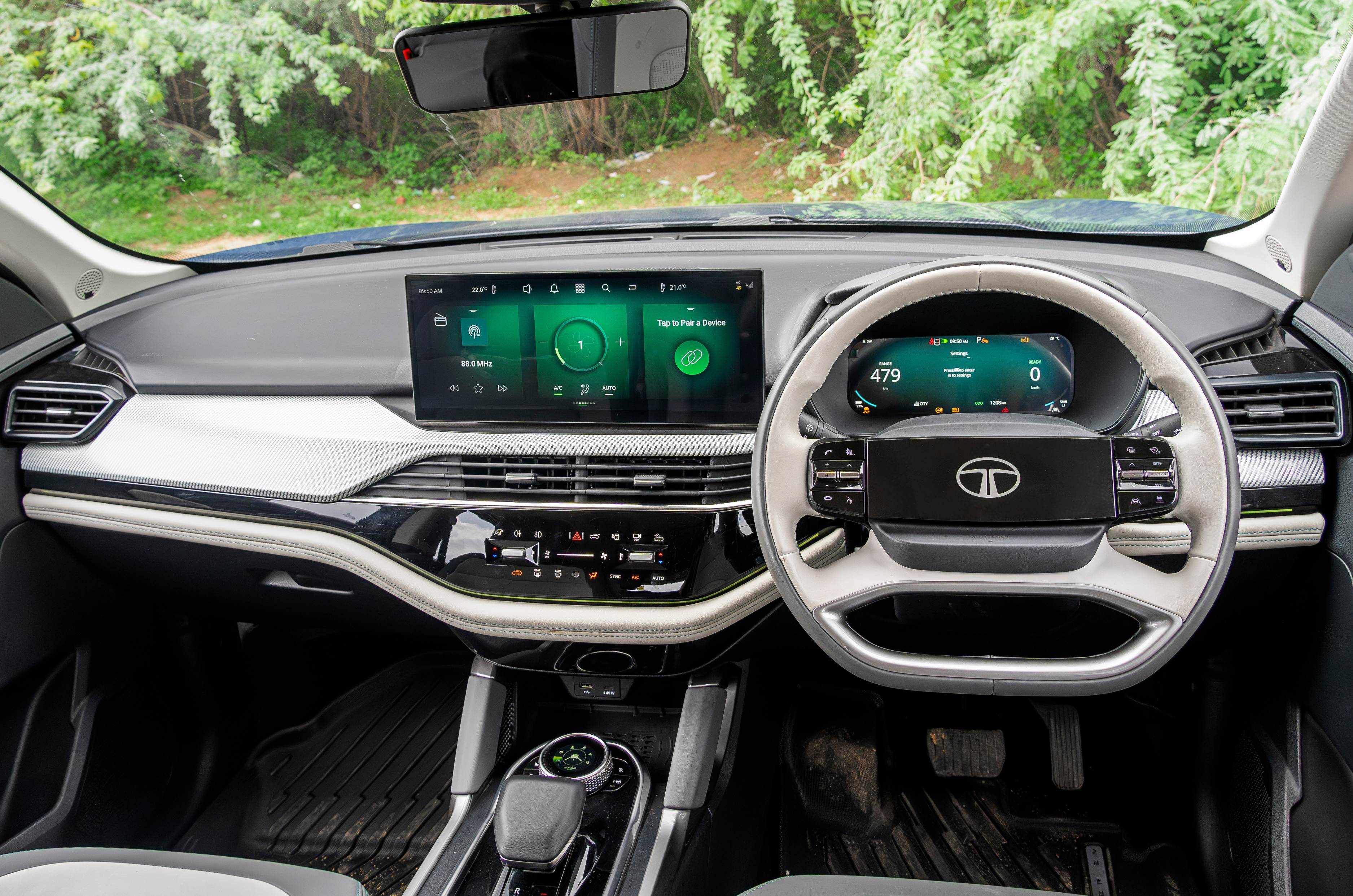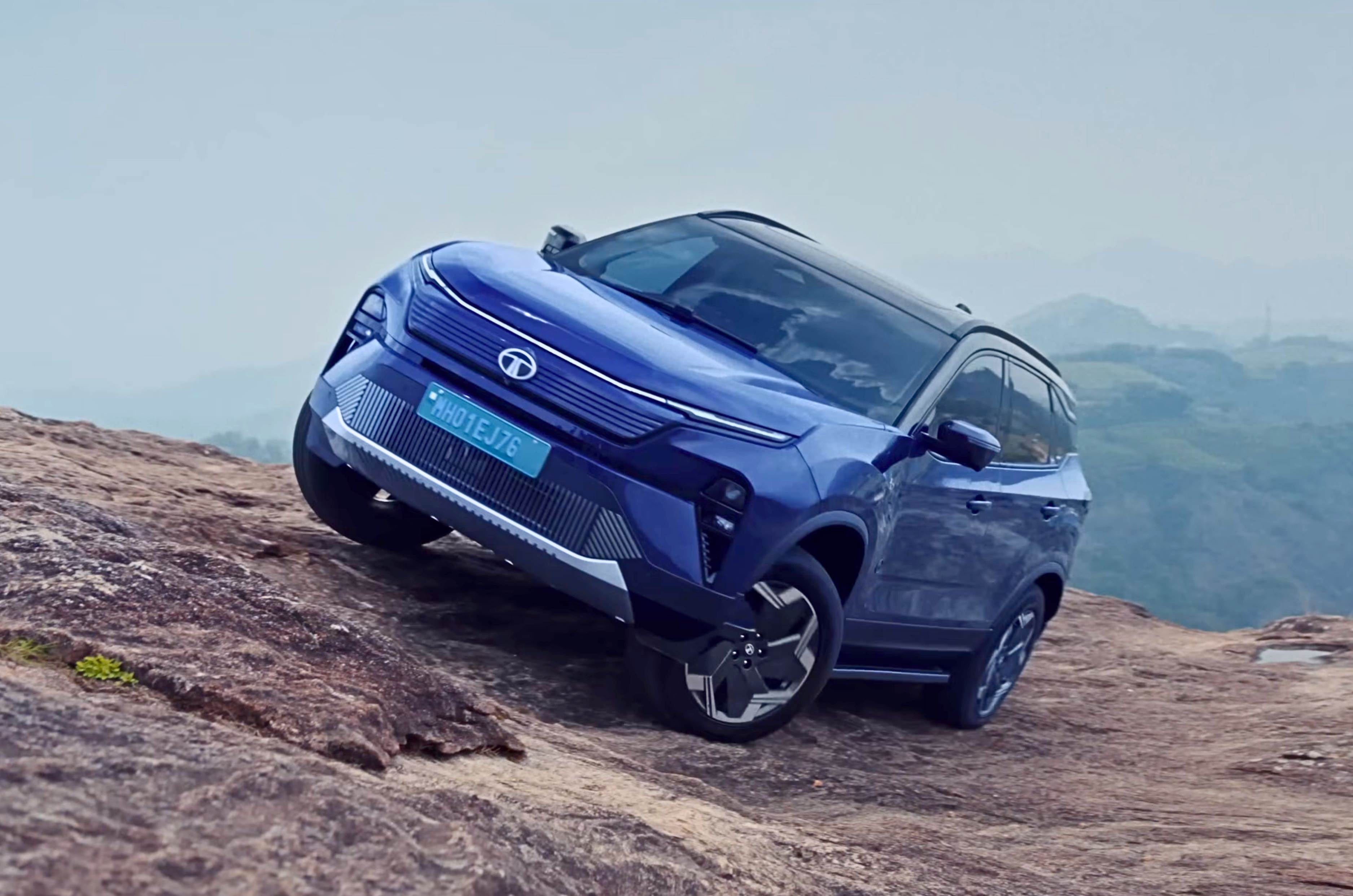
The Tata Harrier EV is the Indian carmaker’s biggest, most powerful, and most advanced electric car to date. Launched in July, the Harrier EV has accrued attention for its attractive pricing, strong powertrains, and extensive list of creature comforts. If you’re in the market for a Harrier EV, listed below is everything you need to know about the Tata SUV before pulling the trigger.
What is the Tata Harrier EV price?
The Harrier EV price starts at Rs 21.49 lakh and extends to Rs 28.99 lakh. Though this pricing is introductory and exclusive of costs surrounding the AC fast charger and its installation, the Harrier EV is still the most affordable SUV in its segment.
Undercuts rivals by up to Rs 5 lakh
| Tata Harrier EV price comparison with rivals | |||
|---|---|---|---|
| Harrier EV | XEV 9e | Atto 3 | |
| Price (Rs, lakh) | 21.49-28.99 | 21.90-30.50 | 24.99-33.99 |
Compared to rivals like the Mahindra XEV 9e and BYD Atto 3, the Harrier EV is cheaper by Rs 41,000 and Rs 3.50 lakh, respectively, for the base variants. At the top end, meanwhile, the Harrier EV undercuts the XEV 9e and Atto 3 by Rs 1.51 lakh and Rs 5 lakh, respectively.
What is the Tata Harrier EV battery size and warranty?
Lifetime battery warranty for both 65kWh and 75kWh units

Tata equips the Harrier EV with 65kWh and 75kWh LFP battery pack options, both of which get lifetime warranties. The 65kWh battery is available in the Harrier EV’s Adventure, Adventure S, and Fearless+ trims, with prices ranging between Rs 21.49 lakh to Rs 23.99 lakh. Pricing for the larger 75kWh Harrier EV starts at Rs 24.99 lakh and tops off at Rs 28.99 lakh.
How long does it take to charge the Tata Harrier EV battery?
Charging options include 3.3kW and 7.2kW AC chargers, and 120kW DC chargers
The Harrier EV battery can be recharged from 10 to 100 percent in up to 10.7 hours using a 7.2kW AC fast charger. You also get the option of using a 120kW DC fast charger, which can top up the Harrier EV battery from 20-80 percent in a relatively brisk 25 minutes.
What is the top speed of the Tata Harrier EV?
Up to 180kph
![]()
The Harrier EV 65 comes with a single rear-mounted electric motor that generates 238hp and 315Nm, whereas the 75kWh variants add an electric motor on the front axle, forming an all-wheel drive setup and a segment-best output of 313hp and 504Nm. 0-100kph for the latter configuration comes up in an impressive 6.3 seconds (claimed), and the Harrier EV can keep accelerating up to an electronically-limited top speed of 180kph.
What is the Tata Harrier EV range?
Up to 627km (claimed)
For the 65kWh RWD variants, the Harrier EV range is 538km (MIDC-certified). Meanwhile, the Harrier EV 75kWh AWD can achieve a claimed range of 622km, and the 75kWh RWD configuration can travel the longest on a single charge thanks to its 627km claimed range. In our review of the Harrier EV 75 AWD, we were able to extract a real-world range of 436km, which works out to a battery efficiency of 5.81km/kWh.
What features does the Tata Harrier EV get?
Panoramic sunroof, large touchscreen, Level 2 ADAS, and more

The Harrier EV feature list is loaded with everything you could expect at this price point, such as a 14.53-inch Samsung QLED infotainment touchscreen with wireless Apple CarPlay and Android Auto, 10.25-inch digital driver’s display, panoramic sunroof, powered tailgate, digital interior rearview mirror, 10-speaker JBL sound system, 360-degree camera, digital key, built-in dashcam, ventilated and powered front seats, powered Boss mode for the rear-left occupant, Level 2 ADAS, connected car tech, ambient lighting, auto park assist, and more.
Can the Tata Harrier EV go offroad?

As the only AWD SUV in its segment, the Harrier EV comes packed with a few useful inclusions for when you want to venture off the beaten path. Chief among these is a new ‘Ultra Glide’ rear suspension setup that gets frequency dependent dampers, which absorbs bumps more effectively.
Harrier EV offroad features
You also get six terrain modes – Normal, Snow/Grass, Mud-Ruts, Sand, Rock Crawl, and Custom – to optimise drivability on rough surfaces, low-speed cruise control that can be set as low as 5kph, and a 540-degree camera that projects a view of what’s underneath the car.
Should you buy the Tata Harrier EV or Mahindra XEV 9e?
Harrier EV beats XEV 9e on the price front
As detailed above, the Harrier EV has the price advantage over the XEV 9e throughout their respective variant line-ups, and there isn’t much variance between their feature offerings too. The XEV 9e does offer flashier goodies like an extra touchscreen for the front passenger and lighting effects on its panoramic sunroof, but these may not appeal to everyone.
XEV 9e offers greater range and more luggage capacity
Additionally, the XEV 9e’s swoopier coupe SUV design can be a bit more divisive than that of the Harrier EV, which looks largely similar to the diesel Harrier. In terms of range, though, the XEV 9e is ahead of the Harrier EV by up to 29km. Moreover, the XEV 9e’s 663-litre boot is substantially larger than Harrier EV’s 502-litre capacity (measured until roof instead of parcel tray), and the Mahindra SUV also gets a larger 150-litre frunk.
All prices are ex-showroom, India.
Also see:
Tata Harrier EV price, range, specs compared with rivals
Tata Harrier EV pros and cons: top 3 reasons to buy, 2 to skip

